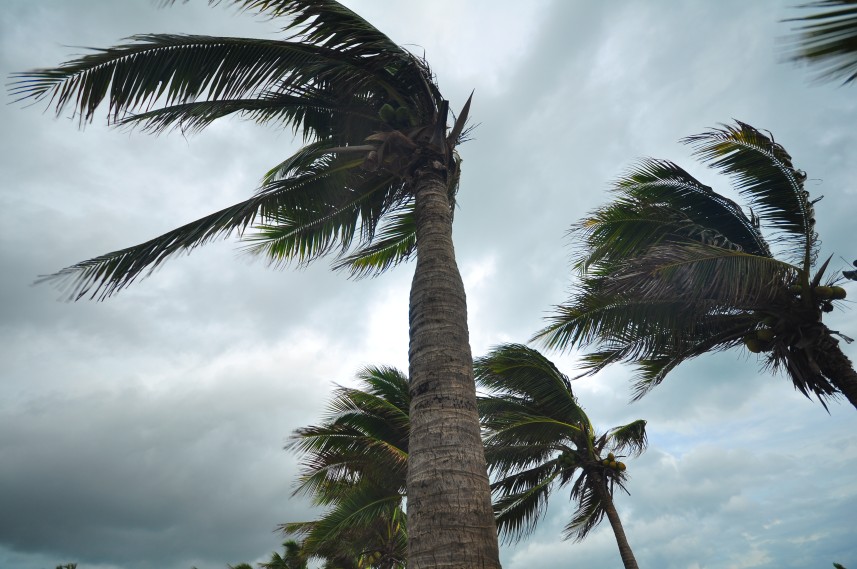
Heavy Rain, Flooding, and Chance of Severe Weather Staring Down the Southern U.S.
January 22, 2024
Posted: September 13, 2023 1:49 pm





While all eyes have been rightfully focused on the development and trajectory of Hurricane Lee, the rest of the Atlantic is also showing signs of activity. This is typical for this time of the year as the water reaches its peak temperatures and wind shear decreases, providing fertile ground for tropical weather development. Here is what the National Hurricane Center (NHC) is keeping an eye on heading into the second half of September.
Two Different Disturbances Under Watch in the Atlantic Basin
The NHC is currently monitoring two separate zones of disorganized rain showers and thunderstorms currently spinning off the west of Africa and into the area surrounding the Cabo Verde Islands. One of these features could turn into the next significant threat in the Atlantic basin, joining Hurricane Lee and Hurricane Margot.

The NHC has designated these disturbances as Invests 97L and 98L, projecting that both features will continue to move to the west through the end of this week. The Invest 98L is forecast to further organize and intensify over the course of the next few days as it merges with a large zone of low pressure. Should this system intensify into a named storm, it will go by the name of Nigel.
This tropical feature is projected to move into the same area of exceptionally warm ocean waters that Hurricane Lee found last week. This warm water will serve as fuel for further development as the system takes a path similar to Lee’s journey through the northeastern Caribbean.
How Hurricane Lee Will Influence Tropical Developments in the Near Term
The irony is that Lee’s track through the western Atlantic and north of the Caribbean islands may work to stymie the development of this next potential system. This is due to an element known in meteorological circles in upwelling. The term is used to describe how high winds associated with storms can push out water and lower water temperatures. Because cooler water comes up to the surface during this process, the lower temperatures serve to hinder the development of storms that feed on warmer waters.
Lee strengthened from a Category 1 hurricane last Thursday to a dangerous Category 5 storm in less than 24 hours because of the warm waters in this part of the basin. However, the cooler waters that it left behind due to the process of upwelling could prevent rapid intensification of new systems in the near future.
There is also the chance that waters could warm up quickly enough to support more tropical development in the western and central portions of the Atlantic. But it is still too early to tell if this weather maker will threaten the U.S.
What is Next for Invest 98L?
The latest models indicate that Invest 98L will track to the west before turning toward the north when it reaches the central Atlantic. The models do not demonstrate that the storm will move into the Caribbean Sea due to the anticipated direction of the steering winds circulating across the western portion of the Atlantic.
Most models are in alignment that this feature could become the most dominant storm to roam the Atlantic in the second part of September. However, a number of factors could still work to change this prediction, pointing to how tropical weather predictions are not an exact science.
Other Areas of Concern in the Atlantic
Meanwhile, there is still a low risk of development for Invest 97L in the coming days. This disturbance is currently located several hundreds miles to the west-southwest of the Cabo Verde Islands. It is most likely that this zone of rain showers and thunderstorms will merge into the energy circulating around the bigger and stronger Invest 98L.
Of course, the big story is Hurricane Lee. As of early Wednesday, Lee was spinning less than 450 miles to the south-southwest of Bermuda as a major Category 3 storm with sustained winds of 115 mph.
Two environmental factors are going up against each other heading into the back third of the 2023 Atlantic hurricane season. The strengthening of El Niño will boost the presence of vertical wind shear. These changing winds typically limit the development of tropical activity. However, the continuing warmer than average sea surface temperatures are mitigating the increase in wind shear levels.
The season officially comes to an end on November 30.
Did you find this content useful? Feel free to bookmark or to post to your timeline for reference later.

January 21, 2024

January 19, 2024

January 18, 2024